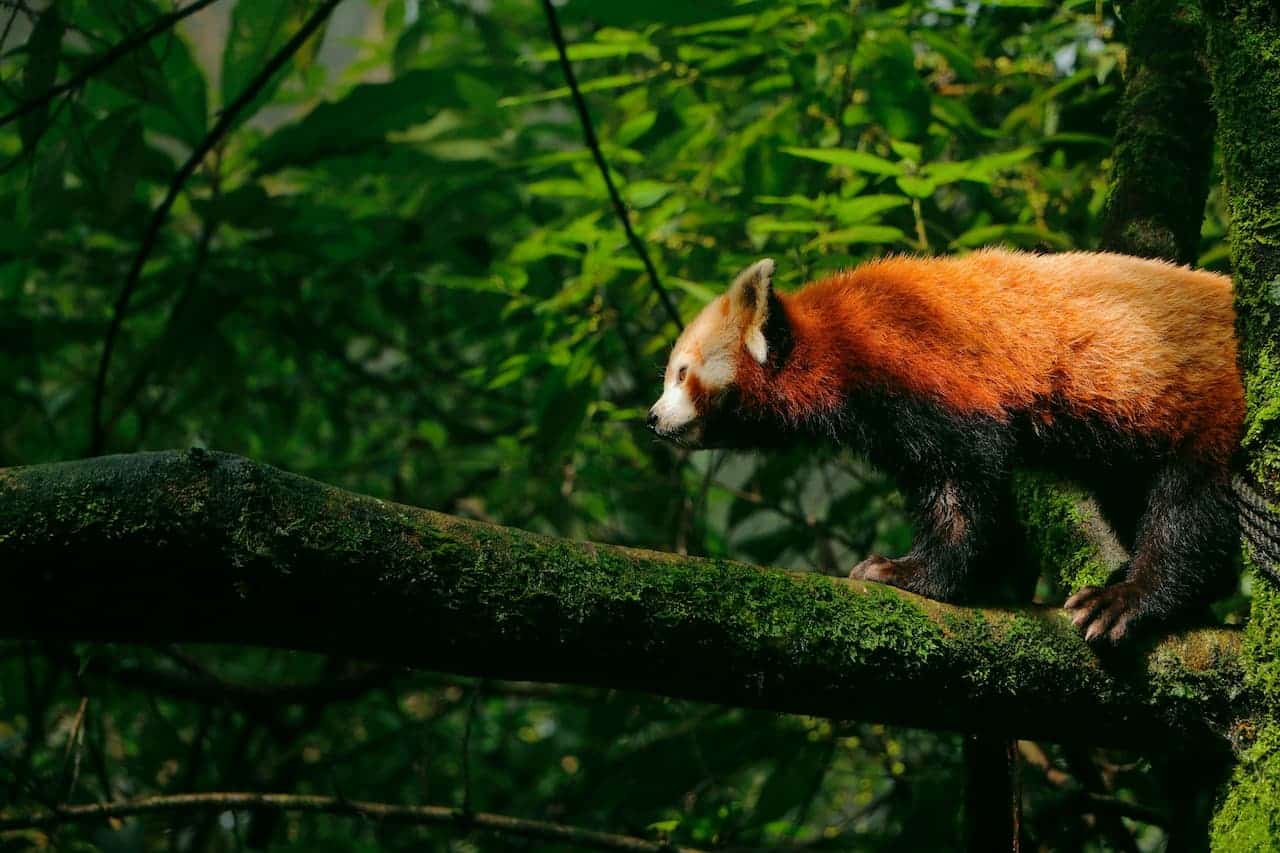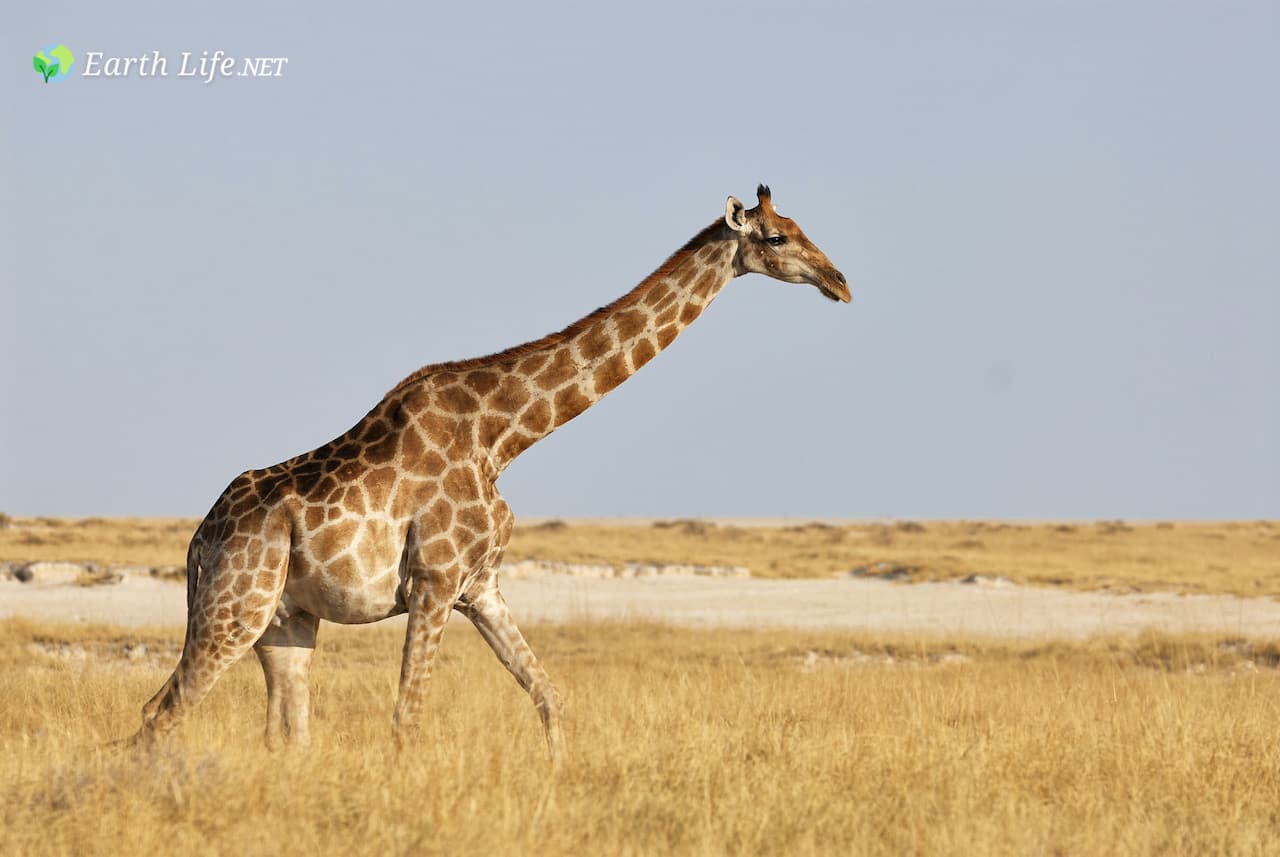Big Cats 101: Facts, Records & List Of Species In The Family Felidae
The Big Cats
Everybody knows what a cat is.
Once you have seen a single adult cat, you can instantly recognise nearly every other species as being closely related.
The possible exceptions to this are the Jaguarundi and the Manul, as well as the Flat-headed Cat and perhaps the Kodkod.
However, once you look closely at even these exceptional species you soon see their cat genes at work. A house cat – although small and domesticated – is a Jaguar, a Tiger or a Leopard in miniature. Their beauty, grace and fluidity of movement have brought great joy to mankind for thousands of years.

Big cats are the essential hunters. Their combination of power, speed and patience make them the ultimate killers – at least as far as terrestrial animals are concerned.
As hunters ourselves, we have always admired them and the freedom of their individuality.
Cats are the most purely carnivorous of all the mammals. An adult domestic cat requires a minimum of 12% protein in its diet, whereas an adult domestic dog can survive quite well on a diet that contains only 4% protein.
Big cats have deep-chested, muscular bodies. They have rounded heads with shorter muzzles than any other carnivore and their tongue is covered with sharp-pointed, recurved, horny papillae with which they can rasp meat from bones, or hair from their prey’s skin before feeding.
They have strong teeth and powerful jaw muscles with a dental formulae = Incisors, Canines, Premolars (Carnassials) and Molars of 
They have 5 toes/claws on the front feet and 4 on the back feet. They have naked pads on their feet but they also have a large amount of hair between the pads. This is most pronounced in desert living species. Females have between two and four pairs of mammae and in males the baculum is vestigial or absent.
Family Felidae
In terms of zoological classification big cats are in the:
- Kingdom – Animalia;
- Phylum – Chordata;
- Class – Mammalia;
- Order – Carnivora;
- Family – Felidae
Felidae, with the notable exception of lions and to a lesser extent domestic cats, are habitually solitary. However they are sometimes are found in pairs (either m/m, f/f or m/f) or larger groups, consisting of a single adult female and her immature young.
Three quarters of big cat species live in forests and many prefer a dense undergrowth that helps them approach their prey unseen. All cats can climb and swim and many are excellent at both these activities. Cats are digitigrade, meaning they walk on their toes (digits).
Cats reach sexual maturity anywhere between the ages of 7 to 9 months in the Domestic Cat, the Bobcat and the Black-footed Cat – or 3 to 4 years, as in the Lion and the Tiger.
The females of most species are polyestrous and the spacing of litters is related to the animal’s size, the length of time it takes the young to mature and the habitat it lives in.
Thus the Domestic Cat may have 3 litters a year and the Sand Cat may have 2. While the larger cats normally have only one litter every 2 years. Most cats however have 1 litter a year providing they have enough to eat.
Gestation periods vary, 56-115 days have been reported, and litter size is usually between 1 and 6 young. At birth the kittens are usually blind and helpless but are covered in hair and often spotted, even if they are not spotted as adults.

They remain with their mother until they can hunt for themselves. The potential longevity for most cats is probably at least 15 years and some individuals have lived over 30 years. Nevertheless, in the wild most cats die, or are killed, before they reach sexual maturity.
The archaeological evidence suggests that the cat lineage branched off from the ancestral Miacoidea (the stem group of all the Carnivora) about 45 million years ago (MYA). More modern cats, recognisably similar to our present day species, began to emerge about 25 MYA and during the last 12 million years the eight separate lineages of modern cats have emerged.
This world we live on is currently graced with the presence of 36 species of cat, see list below.
The number of species varies from 36 to 39 depending on which cat expert you consult. However 36 species is the number recognised by both CITES and the World Conservation Monitoring Centre, so it is the number I have used here.
The individual size range within any given species of cat increases the larger the cat becomes. It is also correlated with both its sex and with the width of its north south distribution range, with individuals being larger the further they live from the equator.
Thus the weight of an adult tiger, the largest of our cats, can range from 75 Kg to 320 kg and its ‘head and body length’ can range from 1.45 metres to 3.18 metres (exceptional individuals have exceeded these normal ranges).
Therefore there is considerable overlap between big cat species and the largest lions, jaguars and pumas can outsize the smallest tigers. Nevertheless, no other big cat gets as large as the largest Siberian Tigers which are by far the most massive of the several subspecies of tiger currently recognised.
With such variation within species, and a very small data set for the smaller species, it is also hard to definitively nominate a smallest species.
The two highest contenders must be the Rusty-spotted Cat and the Black-footed Cat both of which can weigh as little as 1.0 kg when adult. The small amount of information I have suggests that, on average, the Rusty-spotted Cat is the title holder – and this is confirmed by the Guinness Book of Animal Records.
What Is The Fastest Big Cat?
The Cheetah, as the fastest land animal, is of course, the fastest big cat and has been recorded achieving speeds of 96+ km/h (60 mph).
Cheetahs also reach their top speed very quickly, meaning they have very rapid acceleration. One animal in Kenya was recorded on video accelerating from a standing start to 90 km/h in only 3 seconds. However, even the Cheetah can only maintain such a speed for very short distances and after 500 metres it is exhausted.
Most chases in the wild last for less than 20 seconds, during which time the animal covers between 200 to 300 metres. The Cheetah pays a heavy price for its speed, building up a large oxygen debt in its muscles and risking serious over heating on it longest sprints.
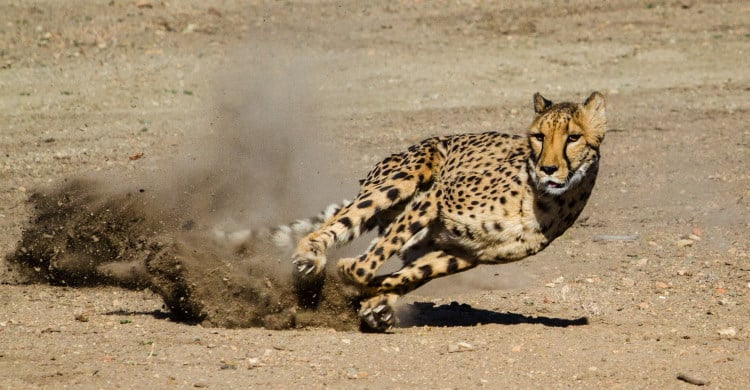
After a 30 second chase, it can take a cheetah 20 minutes to recover its breath (breathing rates can be as high as 150 per minute after a run, as compared with 15 per minute for a normal resting animal) and expend its excess body heat, during which time it is unable to feed on the carcass (assuming the chase was successful) and must risk having it stolen by hyenas, leopards or lions.
Although other big cats can sprint fairly quickly for short distances if necessary, the Cheetah is the only cat specifically designed for chasing its prey. Other cats have evolved to catch slower prey, or to hunt primarily by stealth and surprise, or patience.
Record For Highest Jump?
All big cats are good jumpers and some, such as the Serval, characteristically catch their prey by leaping onto them.
For the larger species, a leap of 3 metres up to the roof of a house is easy. Both the Snow leopard and the Pumas have been observed making incredible leaps, including ones in the region of 18 metres (59 ft) out of trees or down off cliffs.
The shear power of these animals can truly be appreciated by considering the Puma that was observed to leap 3.6 metres (11 ft 10 ins) up into the fork of a tree holding a dead deer in its mouth.
Naturally enough they can also leap up cliffs and up into trees to heights in excess of 5 metres (16 ft) without holding anything.
Big Cat Facts
The secretive Snow leopard holds the world record for long jumping. One exceptional individual was observed by biologists to leap across a ditch which they could later measure has having a width of 15 metres (49.2 ft).
The Puma also holds three other world records.
The first is for having the greatest north/south range in its distribution (from northern British Columbia to southern Chile). Two other cats have a greater overall range of distribution.
The Wildcat can be found from Scotland across parts of Europe and the Middle East to Pakistan and western India, through Kazakhstan, across of Mongolia and throughout most of Africa. However its distribution is very patchy and the big cat with the overall widest distribution is the Leopard.
Leopards can be found across most of sub-Saharan Africa, in a few parts of far northern Africa, across the Middle East and east from the Caspian sea to eastern China and South East Asia. They also occur on the island of Java in Indonesia.

In recent historical times, the Leopard – like the Lion – included much of Europe in its distribution. However intense competition with humanity for living space drove both species to extinction in Europe before the time of Christ.
The above of course excludes the domestic cat, which – because of its association with humanity – has a truly global distribution that is far greater than that of any wild species. The domestic cat we now know and love (Felis sylvestris catus) is believed to be the result of a dual process.
Firstly individuals of the African subspecies of the Wildcat (Felis sylvestris libyca) were domesticated and became a part of the richer family’s household goods. This process started about 9,000 years ago, probably in Egypt, or Babylon. By 8,000 years ago cats were being imported by humanity into habitats that they did not naturally occupy, such as Cypress.
Later this domesticated wild cat was crossed, in western Europe, with the European subspecies of the Wildcat (Felis sylvestris sylvestris). Crosses between these two subspecies of wild cat produce a tabby cat that does not look at all like either of its parents. Most domestic cats are tabbies.
The next three most common colour forms are:
- the blotched tabby,
- single colours (black or white etc.)
- the orange forms called marmalade or tortoiseshell.
The 2nd record the Puma holds is for being seen at a higher elevation than any other cat. One Puma was recorded at 5,800 metres (19,000 ft) in the Andes. A Leopard that was found dead on mount Kilimanjaro at 5,700 metres (18,700 ft) is a close second place holder.
However neither the Puma nor the Leopard normally live at such high altitudes and both are more frequently encountered much nearer sea level.
Three species of big cats specialise in high altitude living. The most famous of these is the Snow Leopard, which is habitually found between 2,700 and 4,500 metres (8,900 to 14,800 ft) during the summer with records of sightings up to 5,500 metres (18,000 ft). During the winter it normally comes further down the mountains.
The other two alpine specialists are the Chinese Mountain Cat which has only been recorded at elevations between 2,800 metres to 4,100 metres and the Andean Mountain Cat which is normally found between 3,000 and 5,000 metres. Both these cats are small and have small restricted distributions.
The third record the Puma holds is for having the most common names, at least in English.
Know widely as a Cougar, Mountain Lion and Panther, and also fairly frequently as Painter, Deer Tiger and Catamount, the Puma actually has 40 recognised names in the English language (partly due to the large number of subspecies recognised). It also has at least 25 native North American names and a 18 South American names.
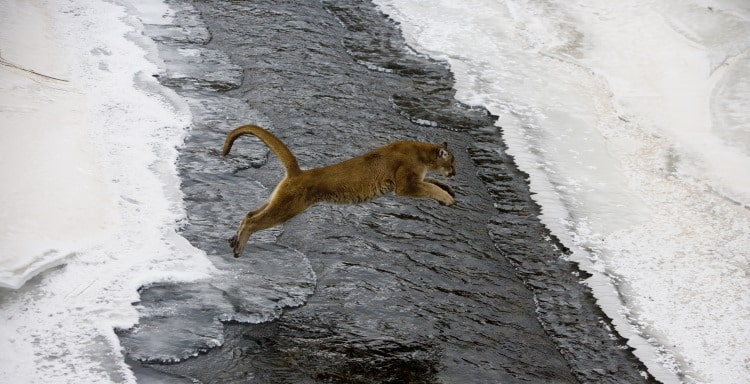
All of which just goes to show how important scientific names are. Like all other animals, the Puma has only one scientific name (although this name may be changed to reflect our increasing scientific knowledge). Currently the Puma is Puma concolor (it was Felis concolor but this name is not now correct as the Puma is no longer considered to be a member of the genus Felis.)
As human societies become more technological, and as our standard of living increases, even while we depart further and further from nature as a whole, the domestic cat tends to replace the dog as the pet of choice.
Cats require less maintenance and less food than dogs. They are also less dangerous, cleaner and less noisy than dogs. They also climb well and are therefore better adapted to living in towns and cities. Furthermore, in our modern world, cats, in their rodent killing capacity, are more useful to us than dogs and less of a nuisance when they go feral.
In 1997 there were estimated to be 70 million pet cats in the USA and only 56 million pet dogs.
Like all animals, cats need to perceive the world they live in. As mammals they use the same five (six if you are a Buddhist) senses that we use. However they do not use all their senses in the same proportions as we do. Although cats are the most visually oriented of all the carnivores, they still rely less heavily on vision than we do. Therefore they make more use of other senses than we do, particularly hearing, smell and touch.
Cat Vision
Cats have excellent eyesight ,with a large area of binocular vision which allows them to be excellent judges of distance. Their eyes are larger than ours in proportion to their body mass – indeed a house cat has eyes only a little smaller than a human.
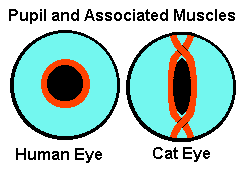
The pupil of a cat’s eye, as everyone knows, is slit-like rather than round as ours is. It is also controlled by a different set of muscles than ours. In the human eye the pupil is controlled by circular sphincter, in a cat’s eye the pupil is controlled by a set of interlaced fibres. The effect of this is that in the cat’s eye the pupil can actually be closed completely, whereas in the human eye, because of the limits of contractility imposed by the circular design, the pupil cannot be closed completely.
A combination of more rods but fewer cones and a larger pupil (when fully opened) with the possession of a tapetum (see Mammal Vision) gives cats a greatly increased sensitivity to light.
A cat can distinguish two different objects in a light intensity of only 17% of that required by a human being.
Cats do not actually see in the dark, but they can see quite well in a light environment that appears dark to humans because of the physical limitations of our eyes. Effectively their sight is 6 times better than ours under low-light conditions, albeit it is merely equal to ours in normal daylight.
Cats can see colours; definitely green and blue and possibly red. However they see them much less intensely than we do and they appear to make no use of this ability.
It is very hard to train a cat to distinguish two objects on the basis of colour rather than on a basis of reflectivity and brightness – and they appear to be effectively colour-blind. Furthermore a cat sees objects less distinctly than we do.
In daylight a cat would fail to appreciate the fine filigree patterns on the wings of the moth Habrosyne pyritoides, even though it would be able to see the moth flying past on a dark night when we would fail to see it at all.
Hearing In Cats
Cats have a much greater range of hearing than humans. Those smaller species which have been tested can hear sounds of much higher frequency than us, up to 65 kHz – what we call ultrasound.
In fact their hearing range seems to correlate well with the range of sounds made by rodents, animals that make up a large percentage of the diet of smaller cats (if anyone has studied the upper hearing range of the large cats I have not heard of it).
The large cats however, or at least lions, can hear sounds that are too low for human ears – what we call infrasound. There is also an infrasound component to the male lion’s roar.
Cats use a range of sounds to communicate with each other. Growling, hissing, snarling, spitting and mewing are all used by all species. However they can also often make a range of other sounds that have less common, yet specific, uses such as gurgles, puffs, purrs, grunts and something called the wah-wah call.
Only the four larger species, tiger, lion, jaguar leopard are able to roar.
Scent Of Smell In Big Cats
Although smell is very important to cats in terms of their communications with each other and they have a larger proportion of their brain devoted to dealing with smells than we do, they do not appear to use smell to track their prey the way dogs do.
They can also get more detailed information from a scent through flehmen.
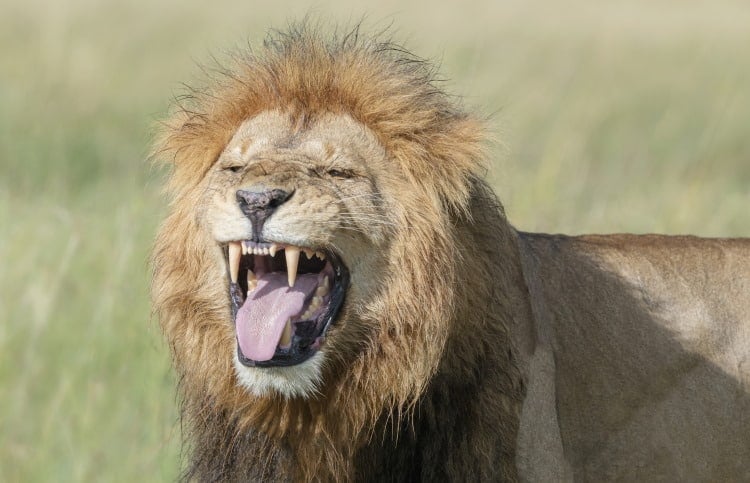
This involves drawing the odour into the mouth in a sharp breath. This allows scents to be picked up by the vomeronasal organ (or Jacobson’s organ), which in cats is situated on the roof of the mouth.
The vomeronasal organ is particularly used to detect sex pheromones and therefore flehmen is more commonly seen in male cats, although females will also flehm. The act of flehmen makes the cat look like it is grimacing.
Big Cats produce species specific and individually specific odours from their anal sacs as well as from three special sets of scent glands. These are known as their facial (on the face), interdigital (between the toes) and subcaudal (beneath the tail) glands.
Cats scent-mark the world they live in by rubbing objects with their head (cheek) and neck, by scraping trees with their claws, and with their urine. Furthermore many species leave their faeces out in the open, prominently displayed to other members of their species.
Females tend to scent-mark more frequently when they are coming into oestrus and males usually scent mark more frequently when they are in the vicinity of a female who is in, or is coming into, oestrus.
For animals that hunt at night, an enhanced sense of touch is obviously useful (see senses in mammals). For cats this is supplied by special sensitive hairs called vibrissae by scientists, but otherwise known as whiskers. A cat’s whiskers are found on its face, under its chin and on its wrists.
Whiskers are extremely sensitive to touch and can tell the cat about even small changes in air movement around it. Being longer than ordinary hairs, they are the first part of a cat to touch the world and they therefore allow a cat to move around in complete darkness without bumping into things.
Do Some Big Cats Have Non-Retractable Claws?
Finally there is one common fallacy that I must correct. Most people know that cats can withdraw their claws into a protective sheath on their toes. Many people though believe that the Cheetah, as well as the Serval and the Flat-headed Cat, have ronretractile claws.
This is not true.
The Cheetah, the Serval and the Flat-headed Cat all have the same retractile mechanisms on their claws as other cats. However there are slight differences in their anatomy which mean that their claws still extend a little beyond the fur of their toes and therefore remain partially visible.
The Cheetah does however lack the protective sheath, so that its claws are still easily perceptible even when the retraction mechanism is in operation. Claw retraction in cats is a passive action, meaning it happens automatically. Although the cat has to contract a muscle to extend its claws, it does not have to make any muscular effort to retract them.
Big Cat List
Below is a list giving some basic data on the 36 species of cats still living in this world with us. The weight data available is vary variable. For some species we have huge numbers of records, for others we have few. Or in one case, only one inaccurate record.
Where there is only one weight shown, this is because the data available was for one gender only or because the data available did not specify the weighed animal’s gender. Most big cat species that have a wide north/south distribution also have a wide size range with individuals that live near the equator being smaller than those that live more distantly from it.
I have limited this table to species level data. You should note that the IUCN deals with subspecies as well as with a species as a whole. Thus there are 11 cat subspecies listed as Critically Endangered, and a further 8 cat subspecies listed as Endangered in the 1994 IUCN database.
Big Cat Species of the World
| Common Name | Scientific Name | ICUN | CITES | Weight in Kg M/F | Distribution |
|---|---|---|---|---|---|
| Tiger | Panthera tigris | E | I | 227/136 | India to Indonesia and N.E Russia |
| Lion | Panthera leo | V | II 1 | 178/120 | SubSaharan Africa + Gir Forest India |
| Jaguar | Panthera onca | I | 91/62 | Africa to Indonesia and N.E. Russia | |
| Leopard | Panthera pardus | II | 47/38 | Brazil to Mexico | |
| Snow Leopard | Uncia uncia | E | I | 45/40 | N.Central Asia |
| Clouded Leopard | Neofelis nebulosa | V | I | 44914 | IndoChina |
| Cheetah | Acinonyx jubatus | V | I | 47/39 | Africa and an area south of the Caspian Sea |
| Puma | Puma concolor | I | 58/47 | South and Central America + W.North America | |
| Jaguarundi | Herpailurus yaguarondi | I | 5.6/4.6 | S. Texas to N. Argentina | |
| Eurasian Lynx | Lynx lynx | II | 21.3/16.8 | Alpine and N. Europe to Eastern Russia | |
| Canada Lynx | Lynx canadensis | II | 10.7/8.6 | N.USA and Canada | |
| Iberian Lynx | Lynx pardinus | CE | I | 12.3/9.4 | Patches of Spain and S. Portugal |
| Bobcat | Lynx rufus | II | 10.3/7.6 | Southern Canada to Northern Mexico | |
| Caracal | Caracal caracal | II 2 | 13.2/10.1 | Africa and the Middle East to N.W. India | |
| African Golden Cat | Profelis aurata | V | II | 9.7/8.5 | Equatorial central and east Africa |
| Bay Cat | Catopuma badia | E | II | 3.5 | The island of Borneo Indonesia |
| Asiatic Golden Cat | Catopuma temminckii | V | I | 14.9/8.5 | Nepal through China to Sumatra |
| Andean Mountain Cat | Oreailurus jacobitus | E | I | 4 | The Andes Mountains |
| Ocelot | Leopardus pardalis | I | 10.8/8.6 | S. Texas to N. Argentina | |
| Margay | Leopardus wiedii | I | 3.8/2.8 | N. Mexico to N. Argentina | |
| Oncilla | Leopardus tigrinus | I | 2.6/2.2 | Costa Rica to N. Argentina | |
| Geoffroy’s Cat | Oncifelis geoffroyi | I | 4.9/3.8 | Southern Bolivia south and east to Patagonia | |
| Pampas Cat | Oncifelis colocolo | II | 2.9 | Southern Ecuador to Patagonia | |
| Kodkod | Oncifelis guigna | V | II | 2.3/1.5 | Southern Chile and Argentina |
| Black-footed Cat | Felis nigripes | V | I | 1.8/1.23 | Botswana, Namibia and South Africa |
| Sand Cat | Felis margarita | II | 2.7/2.2 | N. Africa and the Middle East to S. Kazakhstan | |
| Chinese Desert Cat | Felis bieti | V | II | 9.0/6.5 | Mongolia and nearby parts of China |
| WildCat | Felis sylvestris | II | 4.8/3.9 | Scotland to Africa and Mongolia | |
| Jungle Cat | Felis chaus | II | 8.6/5.4 | Egypt and Turkmenistan to S. E. China | |
| Leopard Cat | Prionailurus bengalensis | I | 2.3/1.6 | India to Indonesia, China and N.E. Russia | |
| Flat-headed Cat | Prionailurus planiceps | V | I | 1.9/1.7 | Indonesia |
| Fishing Cat | Prionailurus viverrinus | V | II | 15.3/7.8 | Sri Lanka + IndoChina |
| Rusty-spotted Cat | Prionailurus rubiginosus | V | I | 1.0/0.9 | Sri Lanka + parts of India |
| Marbled Cat | Pardofelis marmorata | V | I | 2.9 | IndoChina |
| Serval | Leptailurus serval | II | 11.2/9.4 | Africa | |
| Manul | Otocolobus manul | II | 4.3/3.0 | The Caspian Sea east to Mongolia |
1 & 2: Note that while the African forms of the Caracal and the Lion are on Appendix II of CITES, the Asian forms of both these cats are much rarer and are listed in Appendix I of CITES.
Big Cats Are Not Pets
Despite their undoubted charisma and beauty big cats do not make good pets and there is really no valid reason for individuals to keep them, especially the largest ones in captivity.
There are two sides to this situation. The first is that the cats are natural predators and for the larger species humanity is a natural part of their prey list.
They are very dangerous. You can’t evolve as a predator of medium-to-large mammals and end be anything other than dangerous to these same mammals – and humanity is a medium sized mammal. In the USA, since 1990, more than 300 dangerous incidents involving big cats have occurred in 44 states
However it is the other side of the coin that is most depressing.
All big cats are animals that have large territories. Under normal circumstances, they cover many kilometres/miles nearly every day of their lives. To take an animal that was born to this much freedom and keep it in a house, or 5th floor flat, or a cage in your backyard is a crime against life. It is a display of monumental stupidity, ignorance and arrogance.
People who keep wild animals in this way, particularly cats and other predators, are torturing the very animals they claim to love – torturing them every day of their lives. No matter how kind they may convince themselves they are being, they are in fact being incredibly cruel. There is no kindness in captivity.
The fact that there are more tigers in captivity in the USA, than there are wild across their natural range (10,000 vs. 5,000) is a greater comment on the insanity of much of humanity than it is a tribute to the beauty of the Tiger.
Final Thoughts
Well, I hope this has been an interesting look at the big cats of family felidae.
Perhaps now you’d like to learn about the bats.

